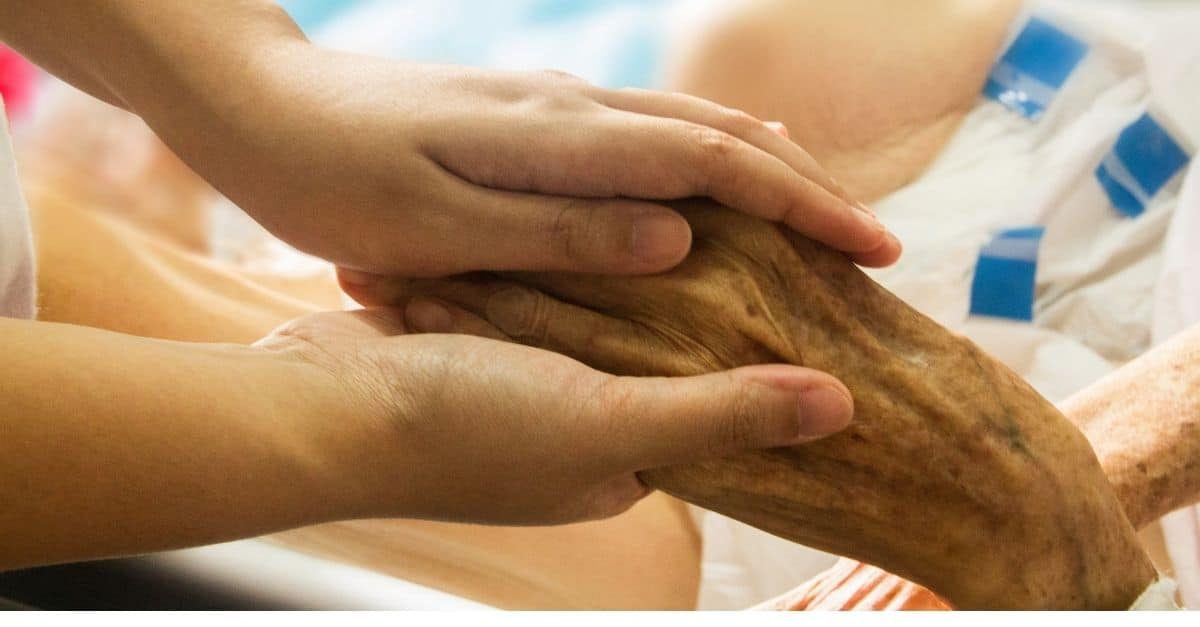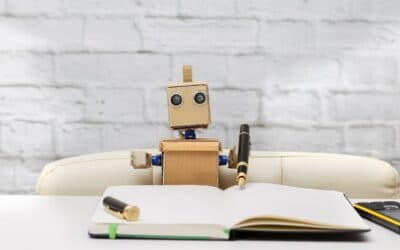Ageing with dignity? The care crisis in Germany is already so advanced that it is no longer possible to guarantee optimal care for all people in need of care. The current situation in care facilities or hospitals often gives cause for alarm on closer inspection. The Institute of the German Economy in Cologne predicts that by 2035 Germany will be short of up to 307.000 care workers ahead. But where will all these skilled workers come from? Possible support could be provided by nursing robots. To what extent can robotics relieve the German healthcare system, and what problems and challenges need to be considered?
Inhaltsverzeichnis
Current state of research: How can care robots support the care of people in need of care?
The Central Ethics Committee (ZEKO) at the German Medical Association (BÄK) sees the Use of artificial intelligence (AI) in medicine as a great opportunity to greatly improve patient care. In fact, there is a large field of applications for artificial intelligence in healthcare that contributes to our well-being by intelligently assisting patients, doctors, medical staff, hospital managers, drug manufacturers and scientists. One of these application examples is robots. In Germany, nursing robots can already be found in care facilities or children's wards in hospitals as part of various small pilot projects. Japan is much further ahead in the use of care robots, not least because of a significantly ageing population. How can Germany benefit from care robots with regard to demographic change?
Actually, robots in healthcare are "old hat". The idea of turning industrial robots into precision machines that assist doctors has been around since 1985, and there are indeed many applications today. However, with the help of artificial intelligence, robots are becoming more autonomous and can complement the natural limitations of human doctors. But the real magic can only happen when the robots learn so much that they surpass human doctors not only in terms of precision and endurance, but also in knowledge and decision-making by combining all the available knowledge from multiple medical databases. Two major application areas stand out for robotics today. Besides AI robot-assisted surgery, these are AI nursing robots.
What can care robots do in the health sector?
New generations of robots will replace humans with a Support a variety of partially or fully automated services. Such flexible and mobile service robots cooperate with humans or even act completely independently. Depending on the model, they have different capabilities - they provide distraction, play music and promote interaction through speech. The technical helpers maintain patients' social and cognitive abilities and carry out rehabilitative measures.
Service robots remind people to take their medication, replace play partners and thus minimise loneliness in care facilities or prolong independence at home. Facial recognition makes it possible to specifically recognise and address people. AI can also support the monitoring of the health status or activities of people in need of care, alarm management and the detection of falls. In the future, however, transport or the lifting of heavy loads could also be carried out by AI. KI robots to efficiently relieve caregivers. With the help of AI, care robots learn the profiles of different people, which means they observe visual and linguistic patterns. This enables them to recognise people and adapt their behaviour to their needs.
How does a care robot work?
In addition to software and artificial intelligence, care robots have various technologies depending on the individual range of services. Possible components of the technical equipment of a care robot can be:
- Reminder functions
- Video cameras
- Sensor systems
- Motion control
- Voice control
- Cleaning systems
Practical examples of robots in nursing care
Various pilot projects with care robots are currently running in Germany. It will be some time before this becomes the norm in old people's homes or hospitals.
A pet promotes health
One example of robots in care is the seal Paro. It is used in pilot projects in elderly care and looks like a white plush seal. The therapeutic robot simulates an animal and can reduce anxiety, insomnia and pain conditions. However, animal companions are often not allowed in medical facilities for hygienic reasons. Seal Paro replaces the emotional support that people can experience through pets or therapies with animals.
The nursing robot has built-in sensors and AI for voice recognition and is already in use in over 40 retirement homes in Germany. Paro also provides support in cancer or children's wards in hospitals and helps combat loneliness in over 30 countries worldwide.
Similar robots are already in use in elderly care facilities, helping to combat staff shortages, social isolation and dementia.
Care robots recognise dangerous situations
Another example of AI care robots is "S3", a project supported by the German government with the aim of developing a 3D environment sensing system for service robots. Together with industry partners and research institutions, a team from [at] a AI-based computer vision technology developed that is capable of Recognise objects and people in the environment and situations - such as a person lying on the ground or spilled liquids. This enables the robot to intervene according to the situation. Through this newly trained image recognition system, other functions are also possible. For example, the filling levels in drinking glasses can be recognised. In elderly care, this offers the possibility of ensuring sufficient fluid intake for those in need of care.
Will the nursing robot replace the staff?
The fear that robots could replace humans is weighing heavily on the discussion surrounding the topic of AI in care. These concerns should be taken seriously, yet a realistic view of the situation should allay these fears as much as possible. The European robotics industry has agreed that technical progress in service and industrial robotics should be oriented towards human well-being. The industry has summarised this and other points in the "Good Work Charter". The highest priority is that robotics is intended for humane work and that the robot should assist the human - not the other way round. In this way, monotonous and unpleasant work should be taken away from humans. In this way, humans have more time to devote to social and creative activities.
Robots indirectly promote human interaction
Tasks that do not require human interaction with patients are good starting points where care robots can take over helpful functions without human deprivation. In the first step, transports, errands or monitoring will be the areas that nursing robots will take over in the future and thus relieve the nursing sector.
Employees can conserve their reserves through these time savings and concentrate better on tasks in which humanity plays a central role. In this way, patient care can be improved without people in need of care interacting excessively with robots.
Current problems with the use of care robots
Even though the argument of relieving the burden is strongly in favour of the use of care robots in the German health system, this development also brings Challenges with it. In the following areas there are still some questions to clarify:
Data protection
In order for robots to be able to remind patients to take their medication, it must be made clear which patient needs which medication - the robot is therefore given access to the patient's file. However, the current level of capability of the Paro seal is still protected by the German Basic Data Protection Ordinance. In the future, however, data protection will play an important role as the intelligence of the nursing robots increases.
Costs
Nursing care in almost all countries has to struggle with inadequate financial resources, as hospitals and nursing care facilities have to make a profit just like other companies. Low wages for the great physical and mental effort of the caregivers, as well as overwork and understaffing are unfortunately the norm in everyday life. And even if care robots could relieve the burden here, it must not be forgotten that care robots also cost money.
Depending on the robot, the financial outlay varies - the Paro robotic robot costs about 5,000 euros, but this does not include costs for staff training and technical upgrades. German health insurance companies rarely cover the costs, so care robots are often financed by donations. In the long run, however, the one-time investments can pay off in financial and social terms compared to ongoing wage payments.
Ethics
Is it ethically correct to confront people in need of care with robots and can these patients still make an informed decision? The extent to which people are in direct contact with robots should be considered critically. For example, the interpersonal basis of trust with a care robot is not necessarily present. Caregivers have more of a chance to interact with people in need of care on an emotional level, which gives reserved or closed people the opportunity to open up and build a relationship.
It is essential that the use of robots serves the goal of moving people into the centre. The aim is not to replace the human carer, but to relieve and support them. Otherwise, the impression could arise that elderly people and those in need of care are accorded less value. However, warmth and care can be promoted specifically through the relieving function of robots, as the support creates more time for caregivers and therefore also humanity.
Insurance
Another question that arises: Who is responsible for the actions of robots when they are controlled or assisted by AI? Is a robot an individual that must be self-insured? Is that possible? And who is liable in case of a problem with the technical helpers?
At the current level of capability of the robots used in Germany, there is a clear answer to this: producers are liable. In the future, however, this answer could change due to more advanced artificial intelligences.
Where is the journey heading?
The Future of care robots depends directly on the development of the AI industry. There are still many hurdles to the use of more complex artificial intelligences, especially in the area of the lack of jurisdiction and data protection regulations. However, the very AI nursing robots for which these guidelines are needed could lead to a significant relief in the care system.
Currently, most developments are still in the testing or prototype phase. AI should now be integrated into our health system on a broad basis so that technology can work hand in hand with health workers and train them accordingly. It is up to us to shape the future. Resources freed up in nursing staff can spend more time on real patient care with the support of nursing robots. When machines take over analytical tasks, we as humans can focus even more on the areas in which we are superior to the machines: Empathy and compassion. If we manage to bring more of these human qualities into the health sector, we will defuse the care crisis of the next few years and create a new form of care quality. Then AI will definitely be a real asset for the health sector.









0 Kommentare